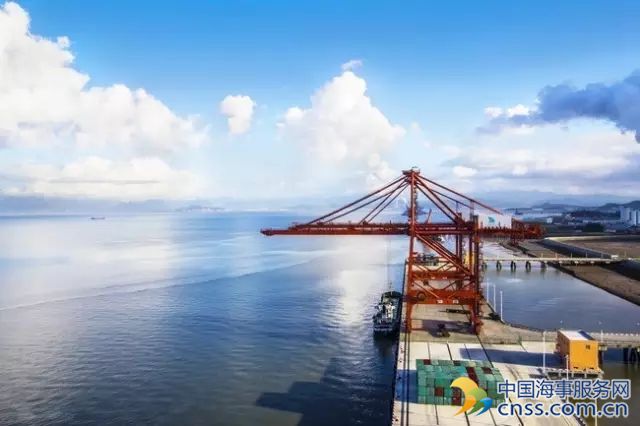China’s commodity imports return to more normal levels

The pullback in China’s imports in April of crude oil and major bulk commodities, except coal, is more of a reminder that strong gains can’t last forever than a warning that demand is waning in the world’s biggest importer of natural resources.
On the surface, the sharp falls in April imports of crude oil, iron ore and copper certainly appear to be a bearish signal, a warning that commodity-intensive sectors, such as construction and manufacturing, may be losing some momentum.
However, there are some short-term factors that help explain the declines, and it’s far too early to call an end to the trend of robust demand for commodities in the world’s second-largest economy.
Take crude oil first, where April imports dropped to 8.37 million barrels per day (bpd), down nearly 9 percent from a record 9.17 million bpd in March.
But put that number into context and a different picture emerges.
In the first four months of 2017, crude oil imports are up 12.5 percent from the same period last year to around 8.46 million bpd.
This is also substantially higher than the 7.6 million bpd imports averaged for 2016, showing that China’s appetite for crude has jumped substantially so far this year, notwithstanding the pullback in April.
It’s also worth noting the impact of domestic policy considerations in China, with many of the smaller, private refiners believed to have nearly exhausted their first-half crude import quotas.
This will likely lead to a moderation in imports in the second quarter before a likely recovery in the second half.
Lower quotas for exports of refined products will also likely result in moderating crude imports, and April’s numbers show this dynamic at work.
Exports of refined fuels fell 25.1 percent in April from March, dropping to 3.5 million tonnes, or about 930,000 bpd.
This lowered the growth rate of refined fuel exports to 15 percent in the first four months of 2017 compared to the same period a year earlier, down from 22.6 percent in the first quarter.
Part of the recent surge in China’s crude imports has been related to the ability of both state and smaller refiners to export more refined products, so any reduction in exports will almost automatically result in lower oil imports.
WEATHER EFFECTS
Iron ore imports slumped 13.9 percent in April to 82.23 million tonnes, the lowest monthly total since October, again something that sounds bearish but isn’t really once viewed in context.
The last eight months have seen four months with imports above 90 million tonnes, including 95.6 million in March, which was the second-highest on record.
April’s imports were most likely hit by weather-related disruptions in the main exporting region of northwest Australia during March, when many of the cargoes would have been loading.
Falls in iron ore prices will also serve to boost China’s imports, as higher-quality but lower-cost ore from Australia and Brazil will displace domestic supplies.
The spot price fell to $60.15 a tonne on Monday, down 37 percent from the recent peak of $94.86 on Feb. 21.
In theory, coal imports should have also been hit by weather in Australia, but instead they rose by 12.2 percent from March to 24.78 million tonnes, taking the year-to-date gain to 33.2 percent.
While a detailed breakdown of coal imports by country will only be released toward the end of May, it’s likely that China boosted imports via rail and truck from neighbouring Mongolia.
Vessel-tracking and port data pointed to a drop of about 550,000 tonnes in imports from the seaborne market in April from March, with volumes from Australia dropping by one-third.
Coal imports are likely to remain robust, given the current cost advantage their enjoy over domestic supplies, which have been somewhat constrained by Beijing’s efforts to eliminate over-capacity and inefficient mines.
COPPER WOES
If you were looking for a bearish commodity story out of China, then copper is the answer.
Imports of unwrought copper dropped 30.2 percent to 300,000 tonnes in April from March, and 33.2 percent from the year earlier month.
Up to now, it had been possible to make the argument that China was replacing imports of refined metal with ores and concentrates, but they too slumped in April.
Imports of ores and concentrates dropped 16.6 percent from March to 1.36 million tonnes, suggesting a lack of appetite among China’s copper smelters for imported ore.
Whether this is a signal of a broader slowdown in China’s copper demand or whether it’s merely a reflection of adequate domestic supplies and inventories is still uncertain.
Nonetheless, copper is often viewed as the canary in the commodity coal mine, and a sustained downturn in China’s imports would likely raise the market’s level of concern.
Overall, China’s April commodity imports represent a return to what might be described as more normal levels, after several months of outsized and unsustainable growth.
Source: Reuters (Editing by Richard Pullin)
HEADLINES
- Do shipping markets want Biden or Trump for the win?
- All 18 crew safe after fire on Japanese-owned tanker off Singapore
- Singapore launching $44m co-investment initiative for maritime tech start-ups
- Cosco debuts Global Shipping Industry Chain Cooperation Initiative
- US warns of more shipping sanctions
- China continues seaport consolidation as Dalian offer goes unconditional